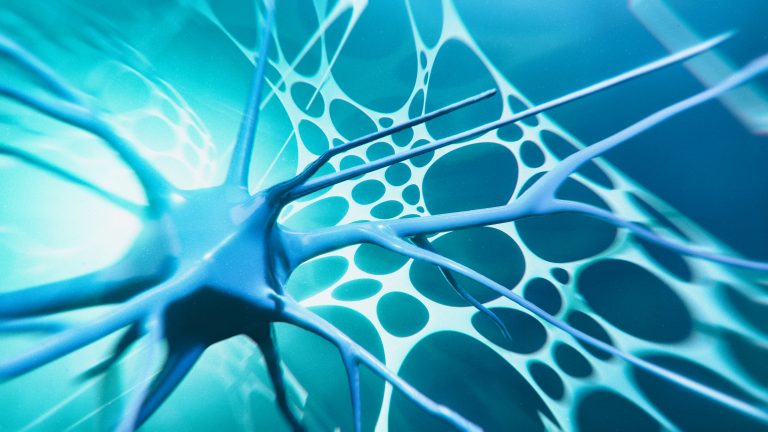
Scientists at Trinity College Dublin published a paper in JAMA that represented the largest ever study (“Lifetime Risk and Heritability of Amyotrophic Lateral Sclerosis”) involving 1,117 people diagnosed with motor neuron disease (MND) to address the question of “nature versus nurture” in the causes of MND, also known as Amyotrophic Lateral Sclerosis (ALS). One in 347 men and one in 436 women can be expected to develop MND during their lifetime, reported the researchers.
“Heritability describes the proportion of variance in the risk of developing a condition that is explained by genetic factors. Although amyotrophic lateral sclerosis is known to have a complex genetic origin, disease heritability remains unclear. [We wanted] to determine the extent of ALS heritability and assess the association of sex with disease transmission,” the investigators wrote.
“A prospective population-based parent-offspring heritability study was conducted from January 1, 2008, to December 31, 2017, to assess ALS heritability, and was the first study to assess heritability in the context of known gene mutations of large effect. A total of 1,123 incident cases of ALS, diagnosed according to the El Escorial criteria and recorded on the Irish ALS register, were identified. Ninety-two individuals were excluded (non-Irish parental origin [n = 86] and familial ALS [n = 6]), and 1,117 patients were included in the final analysis.
“Annual age-specific and sex-specific standardized ALS incidence and mortality-adjusted lifetime risk were determined. Sex-specific heritability estimates were calculated for the overall study cohort, for those known to carry the C9orf72 (OMIM 614260) variant, and for those with no known genetic risk.
“A total of 32 parent-child ALS dyads were identified during the study period. Affected offspring were younger at the onset of disease (mean age, 52.0 years; 95% CI, 48.8–55.3 years) compared with their parents (mean age, 69.6 years; 95% CI, 62.4–76.9 years; P = .008). Lifetime risk of developing ALS in first-degree relatives of individuals with ALS was increased compared with the general population (1.4% [32 of 2234] vs 0.3% [2.6 of 1000]; P < .001),” continued the researchers.
“Mean lifetime heritability of ALS for the overall study cohort was 52.3% (95% CI, 42.9–61.7%) and 36.9% (95% CI, 19.8–53.9%) for those with no known genetic risk. Heritability estimates were highest in mother-daughter pairings (66.2%; 95% CI, 58.5–73.9%).
“This population-based study confirms that up to 50% of variance in ALS has a genetic basis, and that the presence of the C9orf72 variant is an important determinant of heritability. First-degree relatives of individuals with ALS without a known genetic basis remain at increased risk of developing ALS compared with the general population. A higher heritability estimate in mother-daughter pairings points to a sex-mediated effect that has been previously unrecognized.”
The lead author, Marie Ryan, MD, has shown that genetics account for up-to 52% of the risk of developing MND. This means that other important factors or exposures must also be present for the condition to develop, and that the overall risk of developing the disease among other family members remain low.
Ryan also looked at those who carried known genetic mutations associated with MND. In Ireland, in approximately 10% of people with MND, the disease is caused by the abnormality in one gene called C9orf72, which runs in families. Ryan found that those who carried an abnormal copy of this gene and developed MND were more likely to have inherited it from their mothers.
“While difference inheritance patterns based on who transmits the gene have been reported in other neurological disorders, this is the first time this kind of inheritance pattern has been discovered among those with motor neuron disease,” said Ryan. “The main message is that genetic and non-genetic factors contribute equally to one’s risk of developing MND. The fact that 50% of the risk is found within our genes supports our ongoing search to identify the many interacting genes that contribute to the causes of motor neuron disease.
“This will help us to find new treatments for this devastating condition, by pursing a precision medicine approach,” added Orla Hardiman, senior author, academic unit of neurology. “We have already found that MND can cluster with other conditions including dementia, schizophrenia, bipolar disorder, autism, and addiction disorders in around 30% of families. This means that multiple genetic factors working together are likely to play an important role in developing MND. Finding how these genes interact will help us to find new and better treatments.”
MND is a devastating condition which causes progressive paralysis, increasing physical disability, and ultimately death within an average of two to three years. There are over 350 people in Ireland with MND, and one new person is diagnosed every three days with the condition.












